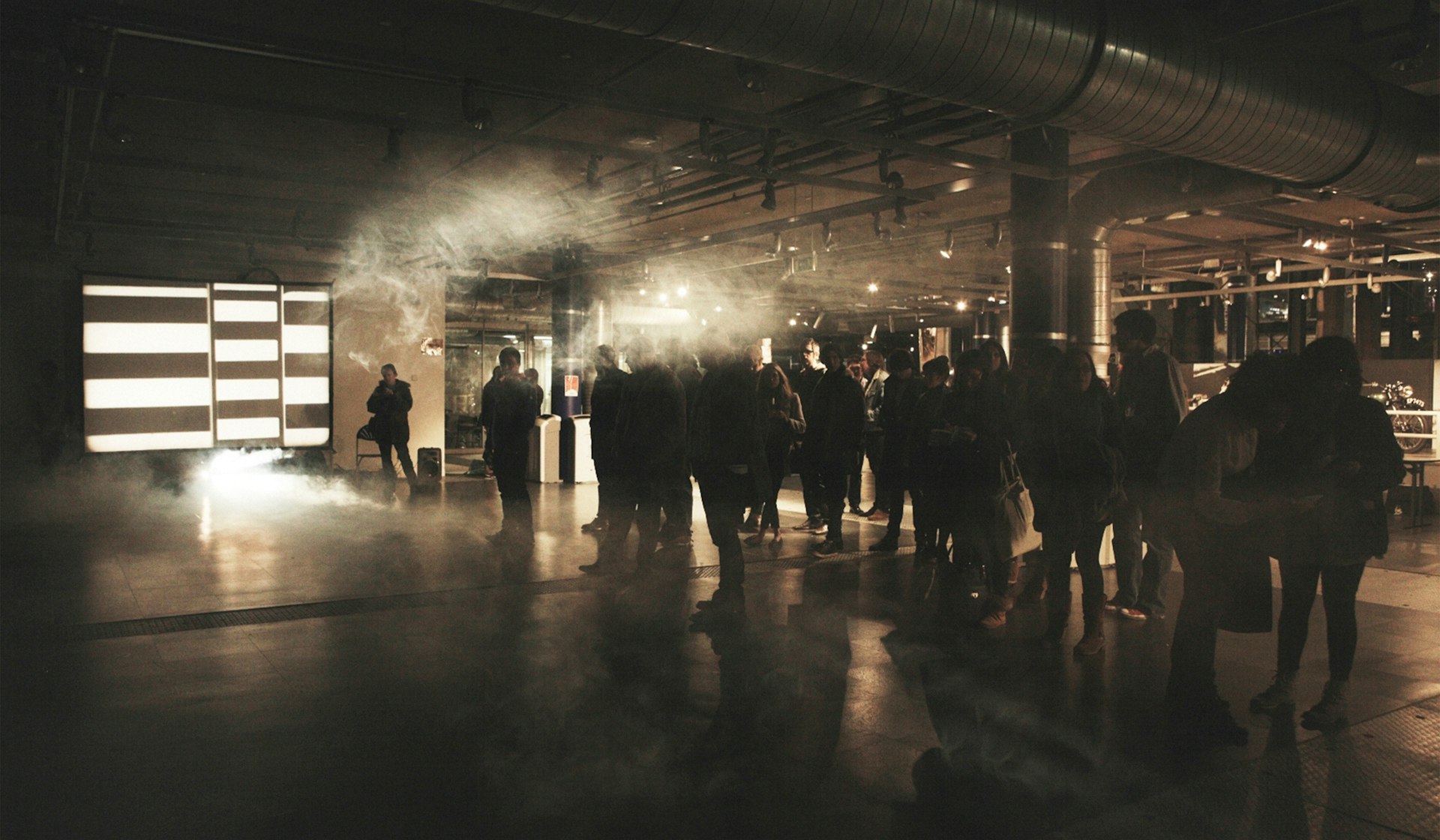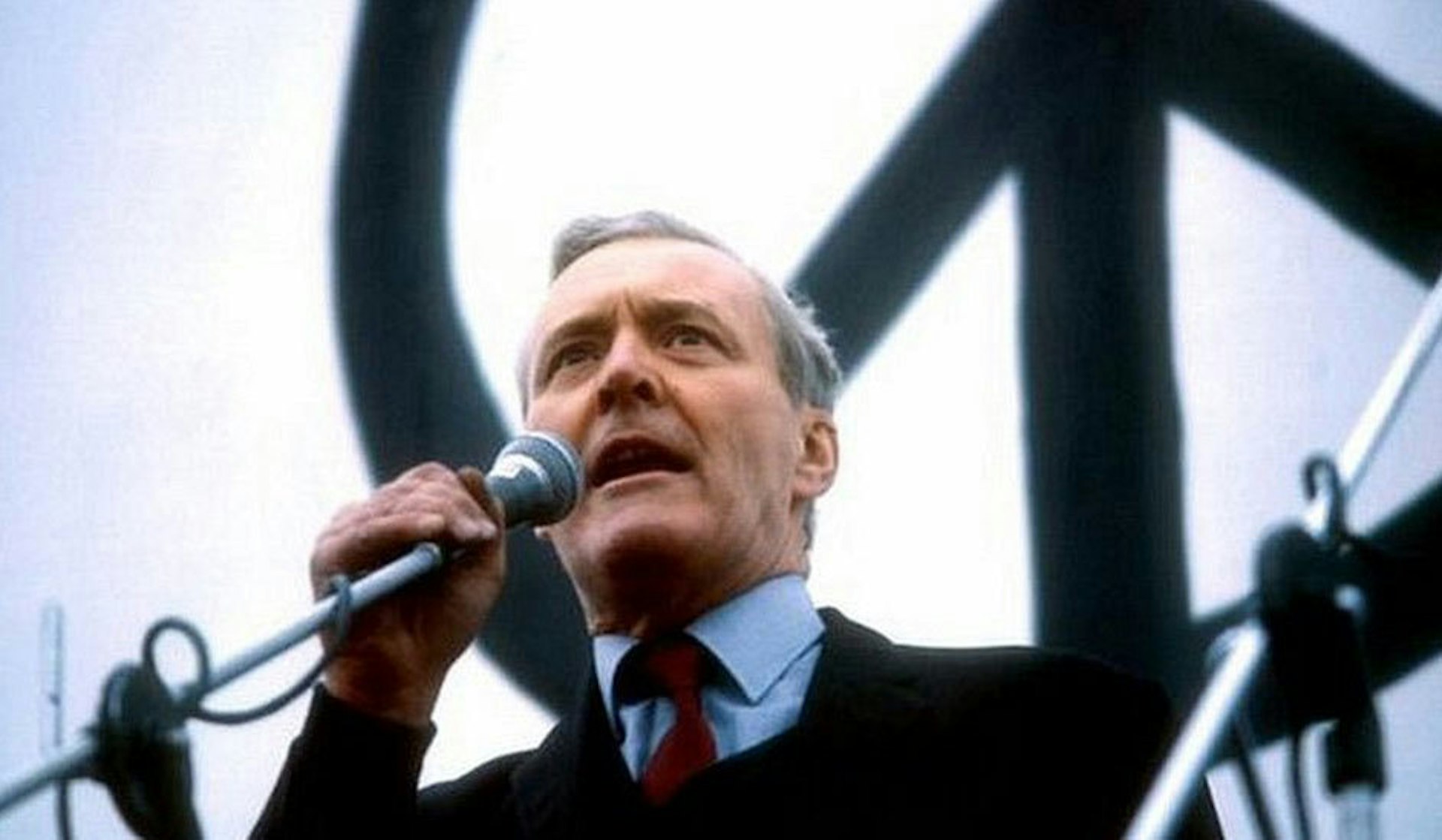
Flatpack Film Festival
- Text by Alex King
- Photography by Flatpack Festival
As Flatpack prepares to take over venues across Birmingham once again, it’s easy to forget this marvellous circus of art and film started life in a pub, just a few short years ago. Since then, it’s burst out and squeezed itself into some of the most interesting – and often unexpected – spaces in Birmingham’s post industrial landscape. This year it colonises galleries, warehouses, a cathedral, cafes, a Korean-style DVD lounge and the UK’s oldest working cinema; while in the past it’s visited caravans, canal boats and the city’s underground sewer system.
Although technically a film festival, Flatpack is really an inviting DIY explosion of creativity and inventiveness that includes walking tours, installations, pop-up screenings and some killer parties. Highlights this year include, The World Made Itself, a performance piece on the origins of the earth, in which LA-based artist Miwa Matreyek interacts with her own animations, set to music from Flying Lotus; Café Neuro, a programme of screenings and events that take advantage of new brain-imaging technology to investigate what cinema does to our brains; and Cheryl Dunn’s incredible NY street photography doc Everybody Street, alongside a new exhibition. To find out more, Huck spoke to festival director, Ian Francis.
What exactly do you do?
I’m the Director of Flatpack Film Festival, an annual jamboree which takes over venues all over Birmingham every March. We also put on all sorts of mobile film events through the year. My main roles are developing projects, programming, and raising money.
Why did you start Flatpack?
We’d been running a series of film nights at a pub in Digbeth, combining shorts with live acts and DJs. It had got to the level where we wanted to do something with more of a national audience, and so we began to daydream about what a festival would look like.
How do you hope it will have an impact?
We want people to come away excited about making their own work, and amazed at the variety of films out there. We also want to help make Birmingham a good place to be.
What’s the existing film/independent arts scene like in Birmingham?
Over the ten years or so we’ve been putting on gigs here, it’s changed a lot. More interesting venues, more art spaces, and much better choice of things to do of an evening. In terms of production, there are some great animation companies working here – including Dice, Second Home, Yamination, Nice Monster. Cinema-wise, although we don’t have a three-screen equivalent to the Watershed or Broadway, mac and Electric both show a good range of films.
Could you explain the festival’s DIY ethos?
I think we decided to set up our own thing when we realised that nobody else was going to pay us to put on the kinds of projects we wanted to do. When you’re responsible for the programme, the flyers and setting up on the night, it means there’s a clear identity that runs through the whole thing. Design has always been just as important for us as the work we show, because our job is to communicate with people and make them want to come. It can be trickier to keep that intimacy and directness when you start to grow in size, though I hope we’ve made a decent job of it.
Who’s involved in Flatpack and what does everyone do?
The core team is myself, Selina Hewlett (operations) and Sam Groves (programming), but being a festival we grow massively in numbers when it comes to festival time. Over the years we’ve accumulated all kinds of brilliant people who help out with PR, production, guests, volunteers and so on. One of the best things about the festival is seeing how everyone’s work comes together to create this magical event.
How can people get involved/show support?
Submit a film (the call goes out in September). Be a volunteer. Suggest an event. Or just come along and be part of it – there’s a lot of free stuff that goes on throughout if you want to dip your toe in. The whole thing has built up through word of mouth, so telling your mates about us is also a big help.
What have been the challenges in bringing Flatpack to life?
Retaining its original character while trying to put it on a stable footing and make a proper living out of it. When it’s your baby it’s easy to feel responsible for everything, but if you want to grow and stay sane then you have to learn how to build a team and give other people some responsibility.
What have been the major inspirations?
One of the first things that drew me to Birmingham was an electronica clubnight called Oscillate, and we’ve always tried to emulate their generous attitude to their audience. Capsule, who put on regular gigs as well as the Supersonic festival, helped us to believe that the whole thing was possible. Finding brilliant films and wanting to share them. And most of all Birmingham itself – its nooks and crannies, its buried layers and jumbled architecture, its people.
What’s the future for Flatpack?
More outdoor stuff. Longer term projects, particularly around archives and the web. We’ve also got the tenth festival in 2016 at the back of our minds, and want to make sure that goes off with a real bang.
The fantastic Flatpack Film Festival takes place in venues across Birmingham, 20-30 March 2014.
